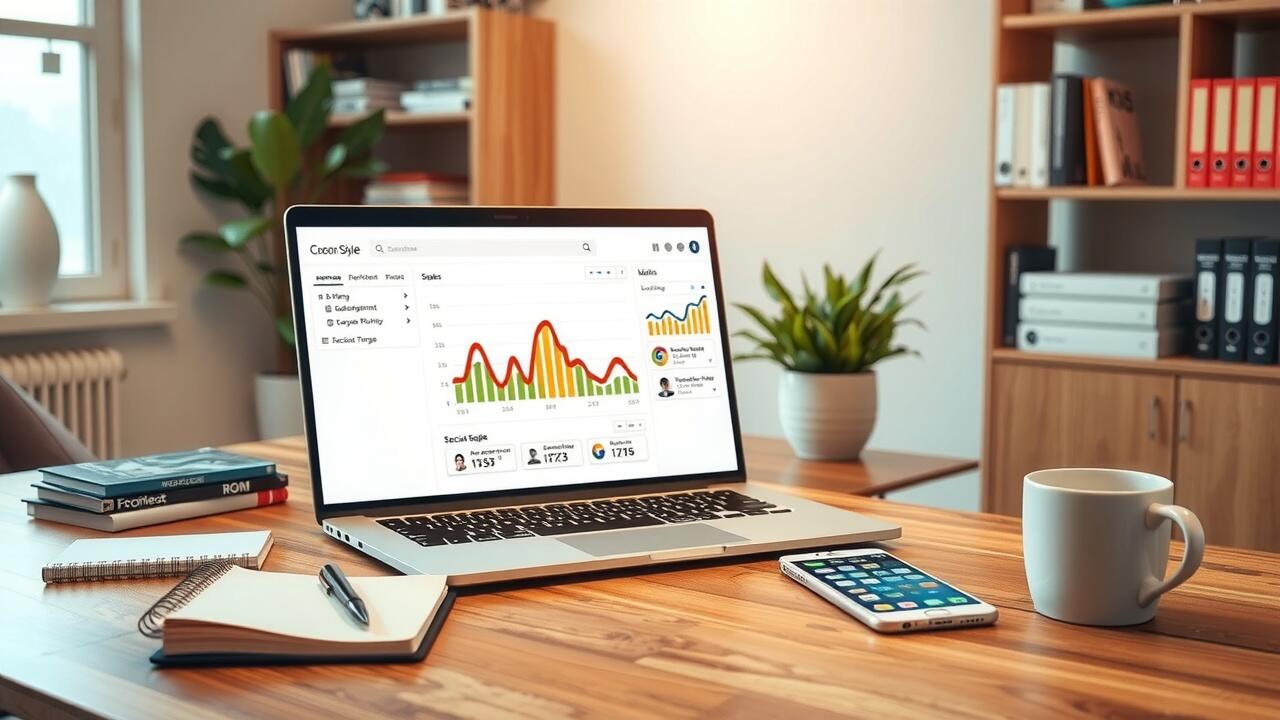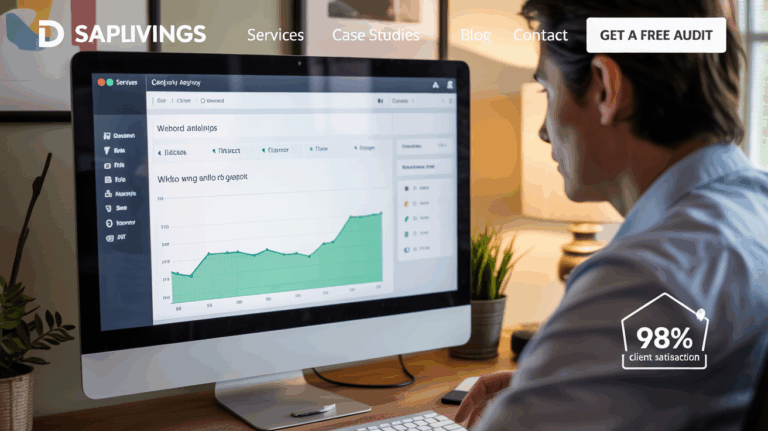Ecommerce SEO: How to Drive Organic Sales Without Ads
Leveraging Internal Linking
Ah, internal linking—a cornerstone of any savvy SEO strategy for ecommerce websites! It’s not just a simple task; it’s an intricate web that connects related pages throughout your site, weaving together a richer tapestry of user navigation. Picture this: as visitors meander through your digital aisles, they’re enticed to delve deeper into the content you offer. This isn’t merely about ease of access; it’s about distributing page authority like confetti at a parade—empowering those lesser-known pages with precious link equity.
Now, let’s talk strategy! When crafting those links, opt for descriptive anchor text that shouts relevance instead of whispering vague phrases like “click here.” You want clarity and context—like guiding lights leading users toward treasures waiting to be discovered. Weave these links seamlessly into your content flow so that readability remains intact while gently nudging users toward must-see products or intriguing category clusters.
And don’t overlook the importance of regular audits on your internal links! This is where magic happens: uncovering opportunities to refine site structure and spotting pesky broken links that could trip up user experience or throw a wrench in your SEO effectiveness. The dance between usability and optimization? It’s all part of the show—so keep those internal connections strong and vibrant!
Strategies for Improved Page Authority
Boosting page authority requires a dynamic, layered approach that emphasizes top-notch content coupled with savvy optimization techniques. It’s not merely about crafting informative product descriptions; they must be fine-tuned for pertinent keywords too! This meticulous attention can dramatically elevate the visibility of individual pages in search engine results—think of it as giving them a shiny new coat of paint that catches the eye.
And then there’s the art of keeping things fresh: regularly updating your content sends a clear signal to search engines—it shouts, “Hey, we’re still relevant!” which only serves to bolster your site’s authority further. Don’t overlook the power of engaging multimedia elements either! High-quality images and videos are like magnets for user engagement—they draw people in and keep them around longer, indirectly pumping up overall page authority.
Now let’s talk internal linking—a cornerstone strategy for distributing page authority across your site. Each link acts like a vote of confidence, guiding both users and search engines toward key pages. This web-like connection enables more efficient crawling by search engines, enhancing indexation and relevance. And here’s a pro tip: always assess those high-traffic pages for internal linking opportunities! By ensuring these traffic juggernauts connect to their less-fortunate counterparts, you open up avenues for elevating their authority and boosting performance in organic searches—it’s all about creating synergy within your digital ecosystem!
Building Backlinks for Ecommerce
Backlinks—oh, how pivotal they are in the grand tapestry of ecommerce! They do more than just dangle on the edges; they elevate authority and amplify visibility like a spotlight on a hidden gem. When you forge connections with esteemed websites, it’s akin to unlocking secret doors to improved search engine rankings—hello, organic traffic surge! But wait—it’s not just about any link; oh no! Targeting those industry-specific directories or niche sites is where the real magic happens. Context is king here, making sure those backlinks aren’t just random but deeply relevant and advantageous.
Now let’s talk strategy: outreach isn’t merely an option; it’s essential for any robust link-building endeavor. Picture this: networking within your sphere and diving into vibrant online communities can blossom partnerships that might’ve otherwise remained dormant. And what about offering something of substance? Crafting valuable resources—think comprehensive guides or eye-catching infographics—not only showcases expertise but also tempts other sites to throw you a linking bone.
But hold on—a savvy strategist knows that keeping an eye on competitors’ backlinks reveals treasure maps leading to potential link-building goldmines! This intelligence helps refine ongoing strategies while bolstering your overall digital footprint. In this intricate dance of links and relationships, every step counts toward constructing a formidable online presence.
Ethical Practices for Link Acquisition
Securing top-notch backlinks is absolutely vital for boosting the authority of an ecommerce website. But how do you get there? Well, forging connections with key industry influencers can spark authentic endorsements that resonate. Dive into guest blogging—it’s not just about writing; it’s your chance to flaunt your expertise while smoothly weaving links back to your domain. And let’s not forget the magic of creating compelling, shareable content! Think infographics or in-depth guides that don’t just inform but entice others to link back organically from their credible sources.
But wait—there’s more! Tap into partnerships with businesses that complement yours. Whether it’s through joint ventures or co-hosted events, these collaborations can amplify exposure and deliver those coveted backlinks. Just remember: keep all your link-building tactics in line with search engine guidelines. This isn’t merely a formality—it safeguards your efforts against penalties down the road and sets you up for sustained success. Engaging genuinely with audiences by sharing insights cultivates an organic link profile that steadily elevates your site’s visibility as time marches on.
Utilizing Social Media Signals
Social media platforms have become essential conduits for amplifying brand visibility and steering traffic toward ecommerce sites. Imagine this: every like, share, and comment is not just a fleeting interaction; it’s a social signal echoing through the digital landscape, elevating the perceived worth of a brand in the eyes of consumers. Search engines? Oh, they’re listening closely to these signals when gauging content relevance—like attentive guardians of online discovery.
Now picture this: consistently unleashing high-quality, captivating content acts as an invitation to share—the more shares you garner, the wider your reach stretches across potential customers. It’s almost like casting a net into vast waters teeming with possibilities!
But wait, there’s more! Engaging directly with followers isn’t just about maintaining appearances; it cultivates loyalty and authenticity that can be palpable. By responding thoughtfully to comments and messages, businesses weave together a tapestry of community that beckons new patrons into their fold.
And let’s not overlook those nifty social media analytics tools! They offer brands invaluable insights into what truly resonates with their audience—a treasure map guiding them through the labyrinth of consumer interests and behaviors. This knowledge sharpens strategies for crafting content that hits home every time—ultimately boosting organic visibility in search results like fireworks lighting up the night sky!
The Impact of Social Engagement on SEO
Social engagement stands as a cornerstone in the quest for elevating ecommerce websites into the spotlight. It’s fascinating, really—search engines are increasingly weaving social signals into their ranking algorithms, which means that when your content gets shared like wildfire across social media platforms, it can catapult your search engine rankings to new heights. Picture this: every like, share, and comment from users isn’t just noise; it creates ripples that resonate far beyond the initial interaction. As visibility surges, so too does organic traffic.
But wait—there’s more! Engaging with an audience on these vibrant social arenas doesn’t merely foster community; it cultivates brand loyalty with a flourish. This connection is magnetic—it lures users back to your website time and again, paving the way for repeat visits and enticing conversions. And let’s not overlook the power of a robust social media presence—it can pull in backlinks from other sites like bees to honey. The more captivating and relevant your content becomes, the higher the chances of it being shared widely—a domino effect that amplifies your site’s authority while bolstering overall SEO performance in ways you might only dream of!
| Social Engagement Metric | Impact on SEO | Benefits |
|---|---|---|
| Likes | Increased visibility and potential for higher rankings | Boosts credibility and attracts new visitors |
| Shares | Encourages backlinks and traffic growth | Enhances brand awareness and reach |
| Comments | Signals engagement to search engines | Builds community and brand loyalty |
| Followers | Indicates brand authority and trustworthiness | Facilitates ongoing audience engagement |
Monitoring SEO Performance
Deciphering the labyrinth of SEO performance is not just a task; it’s an absolute necessity for any ecommerce venture that seeks to turbocharge its organic sales. Enter tools like Google Analytics and Search Console—these are not mere gadgets but treasure troves of insights, unraveling the mysteries behind website traffic, user behaviors, and those all-important conversion rates. By routinely sifting through these metrics, businesses can grasp how well their digital storefront caters to customer whims, pinpoint weaknesses in their game plan, and gauge the overall prowess of their SEO strategies.
But wait—there’s more! Zeroing in on key performance indicators such as organic search traffic, bounce rates, and time spent on pages isn’t just crucial; it’s critical. These figures serve as a window into user engagement or lack thereof—a compass directing necessary tweaks to content and layout. And let’s not overlook tracking keyword rankings alongside click-through rates; these elements unveil how visible products truly are within the vast ocean of search engines. By keeping a vigilant eye on these dynamics over time, ecommerce businesses gain the power to recalibrate their approach continually—syncing it with shifting market currents—ultimately amplifying their online footprint in this ever-evolving digital landscape.
Key Metrics to Track Success
Grasping the right metrics is absolutely crucial for assessing the effectiveness of your SEO strategies. Picture organic traffic as a key player—it’s that shining beacon indicating how many visitors are landing on your site via search engines. But hold on, there’s more! Pairing conversion rates with this organic traffic gives you a deeper peek into how well your website nudges users to take those all-important actions, whether it’s sealing the deal with a purchase or subscribing to that enticing newsletter.
And what about those fleeting moments when users hover over your pages? Yes, tracking their dwell time can unearth rich insights about engagement and relevance of your content—a goldmine if you know where to look!
Now let’s not overlook another pivotal metric: keyword performance. This gem reveals which terms are pulling in the most traffic and driving conversions like clockwork. Meanwhile, keeping an eye on bounce rates might just spotlight potential hiccups in user experience or content quality that could be scaring folks away before they even get comfortable.
Don’t forget to wield tools like Google Analytics and Search Console—they’re invaluable allies in streamlining this monitoring adventure, allowing you to pivot based on real-time data flows. A sharp analysis of these metrics will not only steer your ongoing strategies but also keep them harmonized with your overarching ecommerce ambitions!
- Track organic traffic to understand visitor influx through search engines.
- Monitor conversion rates to assess how well your site drives user actions.
- Analyze dwell time to gauge user engagement and content relevance.
- Evaluate keyword performance to identify high-traffic and converting terms.
- Measure bounce rates to identify potential user experience issues.
- Utilize tools like Google Analytics and Search Console for data tracking.
- Continuously adjust strategies based on insights gained from these metrics.
Staying Ahead of Ecommerce Trends
In the whirlwind of today’s ever-shifting eCommerce scene, being in the know about emerging trends isn’t just important—it’s absolutely vital. Businesses must keep a vigilant eye on the seismic shifts in consumer behavior and technological breakthroughs that can reshape their strategies overnight. Tools like Google Trends are indispensable; they unveil what customers are hungrily searching for, enabling retailers to pivot their offerings and marketing approaches with agility. Moreover, delving into industry reports and research publications sheds light on potential future paths and innovative tactics that competitors might be readying to unleash.
Adaptation becomes a necessity as search algorithms morph unpredictably, directly influencing how consumers stumble upon products in cyberspace. Staying attuned to these fluctuations is key for ensuring an eCommerce site remains optimized for maximum visibility. It’s not merely about keeping pace but proactively updating content, refining user experience, and weaving trending keywords into the fabric of your online presence. Such practices not only align with algorithmic shifts but also resonate with the dynamic preferences of customers themselves. By embracing these continual adjustments, businesses cultivate sustained engagement while driving organic traffic—ultimately paving the way for boosted sales figures and fortified brand loyalty!
Adapting to Changes in Search Algorithms
Grasping the intricacies of search algorithms is not just important; it’s downright vital for anyone looking to thrive in the ever-shifting world of ecommerce. Search engines are like chameleons, constantly changing their algorithms to refine user experience and deliver results that truly resonate. For businesses eager to keep their competitive edge, it’s imperative to remain vigilant—always listening for those subtle shifts in algorithmic updates from giants like Google. This means regularly tweaking SEO strategies: reworking content, recalibrating keyword approaches, and reshaping site architecture based on the latest best practices.
Diligently tracking performance metrics becomes a crucial practice—it’s through this lens that one can uncover fluctuations in traffic and ranking dynamics. Delving into user behavior and engagement patterns offers ecommerce enterprises a clear view of where enhancements are desperately needed. By embracing agile SEO methodologies, brands can pivot quickly when necessary, ensuring they stay relevant in search outcomes. Being informed and adaptable isn’t just beneficial; it’s essential for sustaining organic traffic levels while ultimately boosting sales as the digital marketing landscape continues its relentless evolution.
Conclusion
In the whirlwind of today’s ecommerce arena, where change is the only constant, mastering effective SEO strategies stands as a critical pillar. Grasping how to optimize myriad elements of an online store can catapult visibility and unleash a torrent of organic traffic. By honing in on internal linking, cultivating authoritative backlinks, and tapping into the vibrant realm of social media dynamics, businesses not only elevate their search rankings but also cultivate a devoted customer community.
Yet, amidst this digital hustle and bustle, continuous analysis of SEO performance emerges as vital for enduring success. Staying attuned to industry currents and nimble enough to pivot with algorithm shifts keeps ecommerce platforms vying fiercely in search results. Embracing a proactive mindset towards these strategies can spark greater sales—all while sidestepping the heavy burden of paid advertising—ultimately fortifying an indomitable online presence.
FAQS
What on earth is Ecommerce SEO and why does it matter for online sales?
Ah, Ecommerce SEO! It’s the art of fine-tuning your online store’s website and its delightful content to skyrocket its visibility in the chaotic realm of search engine results. Why is this crucial, you ask? Well, it’s all about attracting that sweet organic traffic—think of it as a golden ticket to increased sales without being shackled to paid ads.
How can internal linking work wonders for my ecommerce site’s SEO?
Internal linking isn’t just some technical mumbo jumbo; it’s like weaving an intricate web throughout your site that distributes page authority. This clever maneuver makes it a breeze for search engines to crawl and index your pages. Plus, let’s not overlook user experience! It deftly steers visitors toward related products, ramping up engagement levels and potentially boosting those precious sales.
What are some cunning strategies for snagging backlinks for my ecommerce site?
When it comes to building backlinks, think high-quality content that’s simply irresistible—a magnet that others can’t help but link to! Dive into guest blogging on credible websites or rub elbows with industry influencers. Don’t forget social media; use those platforms as launch pads to share your stellar content and attract links organically!
In what ways can social media signals sway my ecommerce SEO efforts?
Social media signals—likes, shares, comments—they’re more than mere numbers; they’re powerful tools that amplify your brand’s visibility! They drive eager traffic straight to your website while indirectly nudging those search engine rankings upward through enhanced engagement and awareness.
What vital metrics should I keep an eye on to gauge my ecommerce SEO performance?
Keep tabs on key metrics like organic traffic trends, keyword rankings dance moves, conversion rates’ ups and downs, bounce rates’ sneaky spikes—and don’t forget the number of backlinks in play. Analyzing these figures will unravel the effectiveness of your SEO tactics while illuminating areas begging for improvement!







